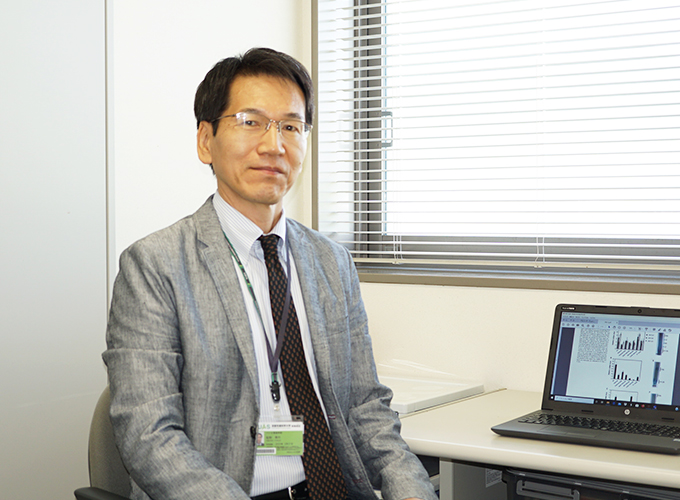Hideyuki Funatsuki
Professor, Ph.D. in Agriculture
- funatsuki.hideyuki

- Areas of Research
- Plant Breeding and Genetics, Crop Physiology
- Profile
- Research
-
Dr. Hideyuki Funatsuki entered Kyoto University of Advanced Science in 2020 and teaches subjects such as Breeding and Genetics, Crop Science, Crop Protection, Crop Cultivation Practice and Crop Studies Lab. He spent much of his time leading up to high school in Hiroshima City, and after completing his master’s program at The University of Tokyo, he worked in a laboratory for a beer company. During that time, he also did research at the University of Hamburg in Germany. Following this, Dr. Funatsuki worked for about 25 years at research institutes and agricultural experiment stations under the jurisdiction of the Ministry of Agriculture, Forestry and Fisheries, where he was responsible for research, planning and research management.
He specialized in plant breeding and genetics and obtained his Ph.D. at the University of Tokyo. In addition to presenting his research results in international journals in his field and at academic conferences in Japan and abroad, he was a member of a breeding group involved in breeding soybeans and buckwheat varieties. Dr. Funatsuki is affiliated with the Japanese Society of Breeding (JSB) and the Crop Science Society of Japan (CSSJ), and serves as an editorial committee member for international and domestic journals published by the JSB.
Dr. Funatsuki’s hobby is watching sports such as baseball, soccer, badminton, curling, and just about anything else. He is a coffee lover and enjoyed café hopping, but he has temporarily halted visiting cafes due to COVID-19. He hopes to resume his activities in the near future.
-
There are two main approaches to improving crop productivity and quality. The first is to improve the cultivation environment of crops through agricultural land maintenance, application of fertilizers and pesticides, mechanization, and so forth. In recent times, the application of AI and robots has attracted attention. The second is to enhance the ability of the crops themselves, which is generally referred to as ‘breeding’.
Humans have been unconsciously breeding wild plants since they were domesticated. Genetic improvement of crops was constantly being carried out, but after the rediscovery of Mendel’s laws of inheritance, systematic breeding increased the speed of those improvements. Precision of breeding also increased when it became possible to analyze DNA, which is the genetic material.
Breeding is based on crossing a genetic material such as a variety that has one advantage with a genetic material that has another, and then selecting the offspring that possess both advantages and fewer disadvantages. Breeding can be designed by identifying the DNA that determines the advantages and disadvantages. However, this process has always taken large amounts of time, and only partial DNA analysis has been possible. However, with the advent of ‘next-generation sequencers’, the efficiency of DNA analysis has improved dramatically. It has become relatively easy to analyze the entire DNA, the whole genome of a crop, and it has become possible to identify multiple DNA sequences responsible for a trait within a short interval of time. As a result, wild species, which have advantages such as being resistant to poor environments but have many disadvantages, and thus could not be used before, are being reconsidered as breeding materials. At the KUAS Faculty of Bioenvironmental Sciences, through the use of genomics, a project is underway to discover useful genes from old Kyoto azuki bean varieties that are no longer cultivated and to breed innovative varieties.
Furthermore, the use of phenomics is currently attracting attention in the breeding world. Phenomics is the study of multifaceted evaluation of various traits (form and properties of crops), and efficient trait evaluation is being promoted using ‘smart farming tools’ such as drones, sensors and AI. Given that KUAS has the Faculty of Engineering, which excels in such technology, it is highly expected that future collaboration will advance the application of phenomics.